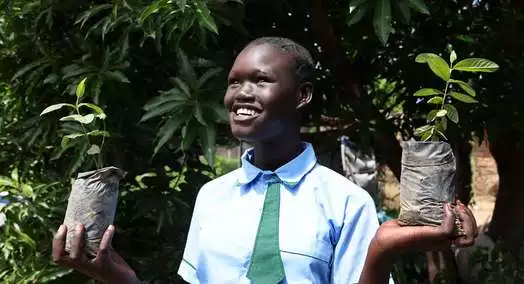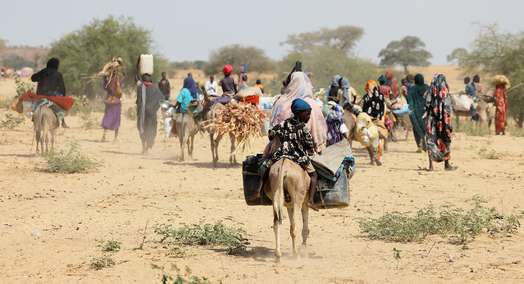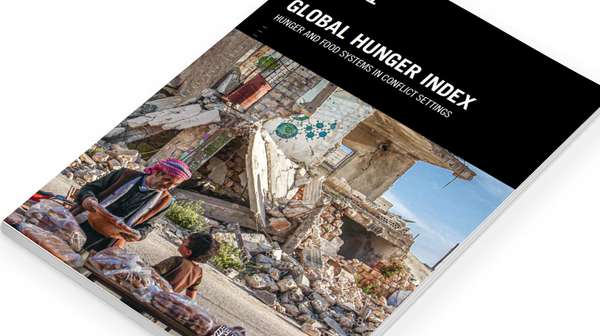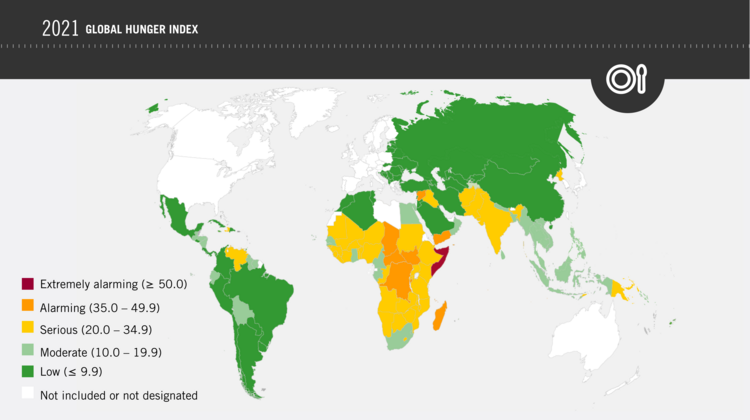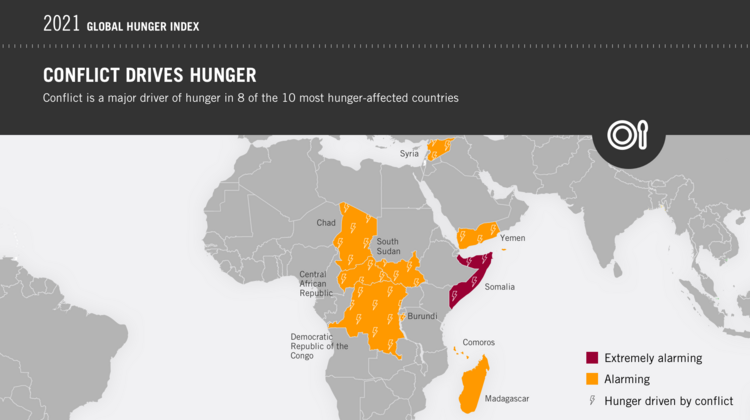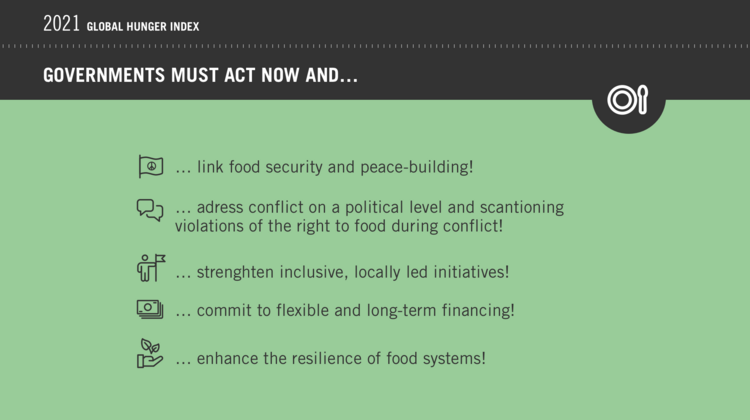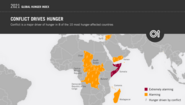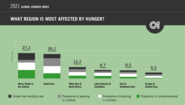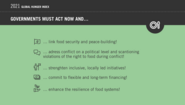Report, synopsis, map: All documents can be downloaded here in English and French.
Ground Being Lost in the Fight Against Hunger Due to War and Climate Change
Welthungerhilfe presents the 2021 Global Hunger Index.
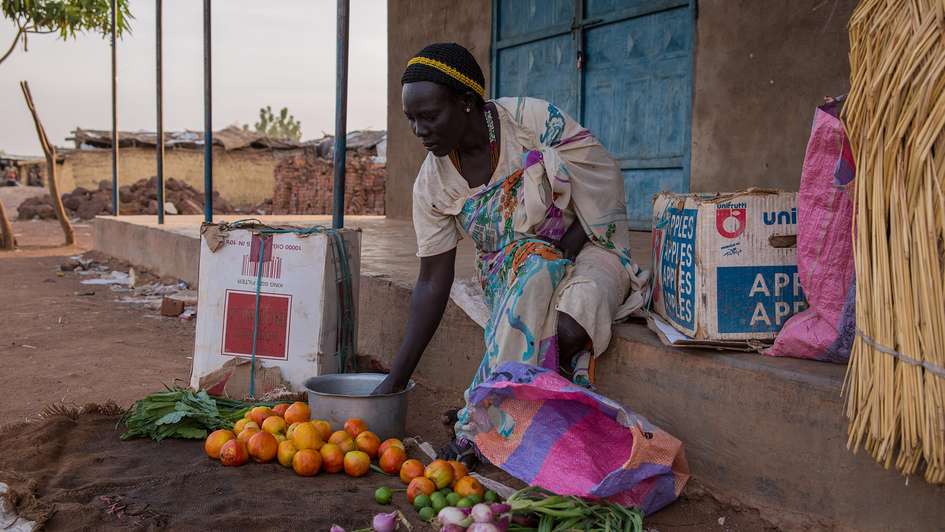
Bonn/Berlin, 14 October 2021. The global fight against hunger is dangerously off track, and the world is drifting farther away from its binding goal of ending hunger by 2030. The latest UN reports already revealed the alarming news that the number of people living in hunger and poverty is growing again after years of decline. Throughout the world, around 811 million people are going hungry, and 41 million are on the brink of a famine. Circumstances are especially desperate in Somalia, Yemen, Afghanistan, Madagascar, and South Sudan. The latest edition of the Global Hunger Index evaluates the nutrition situation in 128 countries and confirms significant setbacks in the fight against hunger. Forty-seven countries will fail to achieve a low level of hunger by 2030, including 28 in Africa South of the Sahara.
“The past year has unfortunately seen our fears borne out. Famines are back, and multiple crises are causing the number of people going hungry to keep rising. The coronavirus pandemic has further exacerbated the tense nutrition situation in many countries in the Global South, and millions of families have lost their livelihoods. However, hunger continues to be driven primarily by war and climate change. The poorest and weakest are especially hard hit by the effects of climate change despite doing the least to cause it. The climate crisis is a question of justice. This means that at the upcoming climate conference in Glasgow this November, we need to set clear and binding goals for reducing CO2 emissions and financial support to promote climate resilience,” urges Marlehn Thieme, chair of the board of Welthungerhilfe.
This year, the Global Hunger Index reveals how dangerous interactions between conflict and hunger can be. The number of violent conflicts has risen in recent years, and in eight out of ten countries with alarming or extremely alarming hunger levels, conflicts significantly contribute to hunger.
“More than half of all undernourished people live in countries shaped by conflict, violence, and fragility. Where war is raging, harvests, fields, and key infrastructure are destroyed. Having left their villages for fear of assault and armed violence, people are forced to depend on humanitarian aid for survival. When hunger and poverty are prevalent, conflicts increase as well. We need viable political conflict resolutions and the strengthening of the right to food. The use of hunger as a weapon of war must finally be penalized consistently. Furthermore, we need flexible funding models that better account for the reciprocal relationship between food and peace,” underlines Thieme.
Press Photos and Infographics
Please download high quality images via click on the photo and click on the link "Originalgröße herunterladen" below the picture.
Usage note:Please note that the pictures may only be used in a Welthungerhilfe context and may not be passed on to third parties. Images must bear the credit copyright "Photographer/Welthungerhilfe". No long-term archiving. Please delete pictures after use!
Welthungerhilfe is one of the largest private aid organisations in Germany; politically independent and non-denominational. It is fighting for “Zero Hunger by 2030”. Since it was founded in 1962, more than 10,369 overseas projects in 70 countries have been supported with 4.2 billion euros. Welthungerhilfe works on the principle of empowering people to help themselves: from fast disaster relief to reconstruction and long-term development cooperation projects with national and international partner organisations.

